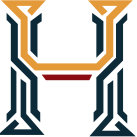When determining a drug crime, the law puts the different substances into schedules. These schedules help identify which drugs are most harmful. They also relate to the regulation of the substance.
The Revisor of Missouri explains drugs end up in certain schedules after assessing how they work, usage and abuse information.
Schedule I
Schedule I drugs are those that are highly abusive and have no medical use. Included in this schedule are many opiates and hallucinogens.
Schedule II
The next level is drugs that are also commonly abused. But these substances do have medical uses, typically with strict limitations. They also often result in addiction.
Schedule III
Schedule II drugs are commonly used by medical providers and do not have a high abuse or addiction potential. They include substances such as codeine and morphine in specific dosages.
Schedule IV
This level of drugs is usually not addictive and widely used for medical purposes. The drugs on the list usually have specified amounts because at the specific amount, they are not as harmful. Although, some of these drugs at higher levels are found on the upper schedules.
Schedule V
The lowest level of drugs is not addictive or generally does not lead to abuse. They also are regularly used to treat medical conditions. This schedule is very similar to Schedule IV and may include drugs found on other schedules, but with very specific quantity levels deemed safer.
The Department of Health and Senior Services decided where to place a drug within the schedules. The agency uses research and available information to make the determination.


